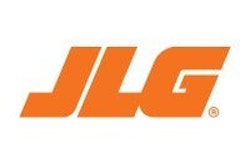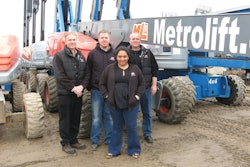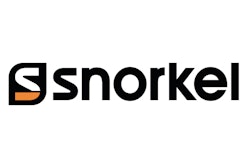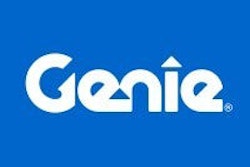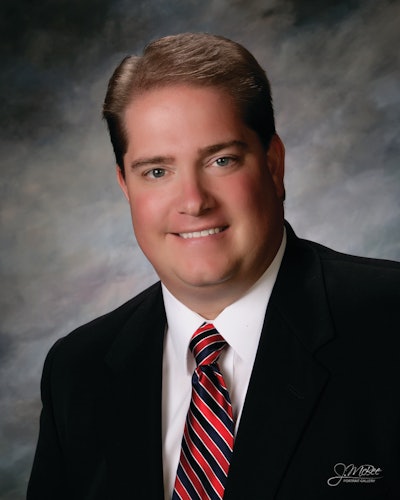
Whether you already specialize in aerial rentals or are simply considering dipping your toes in those waters now that the rental market is in full recovery mode, it's important to get a sense of where this segment of the industry stands and where it might be going. To find out, we talked to three leading aerial manufacturers about the factors they see affecting business in the near future and beyond. In on the discussion were: Matt Fearon, vice president and general manager, AWP Americas, Terex AWP, maker of Genie brand equipment; Jeff Ford, global product director at JLG Industries; and David Smith, president of Snorkel. Here's what they had to say:
How is 2012 shaping up for the aerial market and your company specifically?
Matt Fearon, vice president and general manager, AWP Americas, Terex AWP: The North American market for aerials is very strong and continues to improve. From a Genie perspective, many of our customers showed early confidence in the market and submitted purchase orders in Q4 to secure 2012 deliveries. So we are off to a great start in 2012 and feel this is the second year of five- to seven-year growth cycle.
Jeff Ford, global product director at JLG: We're seeing a number of positive signs for 2012. Replacement demand continues to drive increased AWP and telehandler sales, and there are signs that construction spending is moving in a positive direction.
David Smith, president of Snorkel: For the industry, 2011 was definitely better than 2010 and we expect further growth in 2012. This will be largely driven by fleet replacement programs in the rental sector, both in North America and Europe. New emissions legislation will also drive sales of big booms. At Snorkel, we will also drive growth by increasing market share in several key territories and by capitalizing on interest in our enhanced product range – we used the downturn to develop and introduce a lot of new machines.
How are sales overall, and specifically to rental?
Ford, JLG: Sales in our most recent fiscal quarter, ended December 31, were up nearly 74% over prior year and we experienced double-digit growth across all markets in all product lines.
Smith, Snorkel: Global sales rose by around 25% in 2011, while the order book accelerated by 170%, which demonstrates the increase in demand for aerials. Sales to rental companies in North America were pretty stable, year-on-year.
Fearon, Terex AWP: In 2011 we saw the market rebound significantly and we grew very fast to meet customer demand. In 2012 we are focusing on healthy and sustainable growth rates and leveraging the investments we made in 2011.
How much of current sales are due to the replenishment of aging fleet vs. the development of new markets?
Smith, Snorkel: In North America, it’s almost all fleet replacement for rental companies. Effectively, these guys didn’t buy any aerials for two years, so there are a lot of older machines out there.
Fearon, Terex AWP: Most growth has been primarily driven by fleet age and replenishment, but we are beginning to see some fleet expansion as well. Customers are reporting very good utilization and it’s become more widespread.
Ford, JLG: A significant portion of the growth experienced in late 2011 and early 2012 has been replacement, but we did see significant growth in developing markets including Brazil, China and India.
How does the U.S. market for aerials compare to those abroad?
Fearon, Terex AWP: The North American market is very strong right now, while the European market is improving but still sluggish. It’s still a “wait and see” environment but they are also seeing signs of improvement. Certain areas of Europe are recovering and seeing improvement while other areas are still struggling. Our factory in China is producing product, but the market is developing slower than anticipated. However, we are still committed and holding strong. We are continuing to invest in Brazil to support the rapidly growing market in South America. India is another one to watch – it is also at the beginning stages of development. Each market requires a slightly different approach and we continue to grow our local teams to support our global expansion.
Ford, JLG: Of the two largest and most mature markets, the U.S. market has recovered faster than the European market. In emerging markets like Brazil, we are seeing increased adoption of a wider range of aerial products.
Smith, Snorkel: We have a good handle on the global picture because we have distributors in pretty much every country where there is a market for aerial lifts. And our factory in Elwood, Kansas is the global supplier of big booms (over 60 ft.) which we export to the Middle East and Europe in particular. The U.S. market is still ahead of Europe on the recovery curve. But Scandinavia never really had a recession; those Nordic countries are still strong. We also serve the Latin American market and that is going crazy right now. We recently strengthened our Latin American team and saw immediate dividends. We welcomed a lot of visitors from this region to our booth at The Rental Show and sold a bunch of machines right off the stand.
Do you see the current equipment mix in U.S. aerial fleets changing? Are there any specific types of equipment becoming very popular in the near future?
Ford, JLG: We see products on both ends of the line increasing in popularity. Our recently launched 1500SJ expanded the applications for telescopic boom lifts and is exceeding expectations, while the newly launched 340AJ, our smallest diesel-powered boom lift, is being adopted by rental fleets across the globe.
Smith, Snorkel: With rising fuel prices and pressure to reduce greenhouse gas emissions, we’re going to see an increase in hybrid and all-electric models. There was a misconception that all-electric lifts were only good for industrial applications or interior work. But battery power can be just as effective on mid-size booms that are comfortable outside as well as inside, like the Snorkel A38E.
Fearon, Terex AWP: In general, the equipment mix in the U.S. will remain unchanged. We are seeing a shift though towards large-capacity telehandlers.
How are equipment lead times for your company? How do you expect them to change this year and how does this affect the way your customers are doing business?
Smith, Snorkel: The biggest challenge for all aerial lift manufacturers right now is matching supply to demand. We recently received the first part of a $19-million investment that will help Snorkel reduce lead times by increasing our buying power with key global supply chain partners. So we know we can make a major, positive impact on lead times this year.
Fearon, Terex AWP: Our lead times are model specific. On several models, they have shot out to several months. Our customers are responding by placing orders earlier and we are encouraging them to plan their fleet needs with us months in advance.
Ford, JLG: JLG is currently experiencing strong order patterns that have delayed availability on some products. We are working closely with suppliers to maximize our ability to provide product to customers in a timely manner.
How do you see recent developments within the rental market - such as United's acquisition of RSC - affecting your business?
Fearon, Terex AWP: These are two great companies, and if they learn to leverage their strengths, the new company will become even better. Their size and scope will definitely change the competitive landscape but their combined size is not so large that there isn’t room for others. United has always been the industry leader and is aware of the importance of keeping the industry healthy. I see current as well as new opportunities for smaller rental companies in the markets they serve. As a manufacturer, we expect the demands from United to be significant but we are up to the challenge. We see opportunities to improve our transaction efficiencies and service offerings.
Ford, JLG: JLG has strong relationships with both companies. We are planning for continued success in working with them, and the rest of the market, amidst whatever transpires from this proposed merger.
Smith, Snorkel: Consolidation should help stabilize rental rates at a realistic level, which is good for everybody. I think we’re not done yet and we’ll see more consolidation in this sector in 2012. Consolidation always throws up more opportunities with entrepreneurs creating new start-ups and this is good news for Snorkel. We don’t really see our business growth coming from the major rental companies. Our strategy is to become the aerials partner of choice for the tiers of rental companies below the majors.
What are the primary challenges facing the aerial market over the next year and beyond?
Fearon, Terex AWP: The challenge will be returning the industry to acceptable profitability for both the manufacturers and the rental companies.
Ford, JLG: Continued availability of capital for our customers, economic recovery in Europe and growth in construction spending will be key drivers to sustained growth for the market long term.
Smith, Snorkel: The primary challenge facing the aerial lift industry this year will be growing production capacity fast enough to meet surging demand. But after the last few years, that’s a pretty nice problem to have. We’ll also see price increases this year – some manufacturers have already announced two price hikes, which is indicative of how volatile the pricing can be on the key commodities like oil and steel. Beyond that, it’s still really hard to tell. Personally, I think there’ll be a few years of solid growth for rental companies and equipment manufacturers. During that period, we will also continue to try and solve the eternal question: How do we flatten out the cyclicality of our market and make the industry more sustainable?




